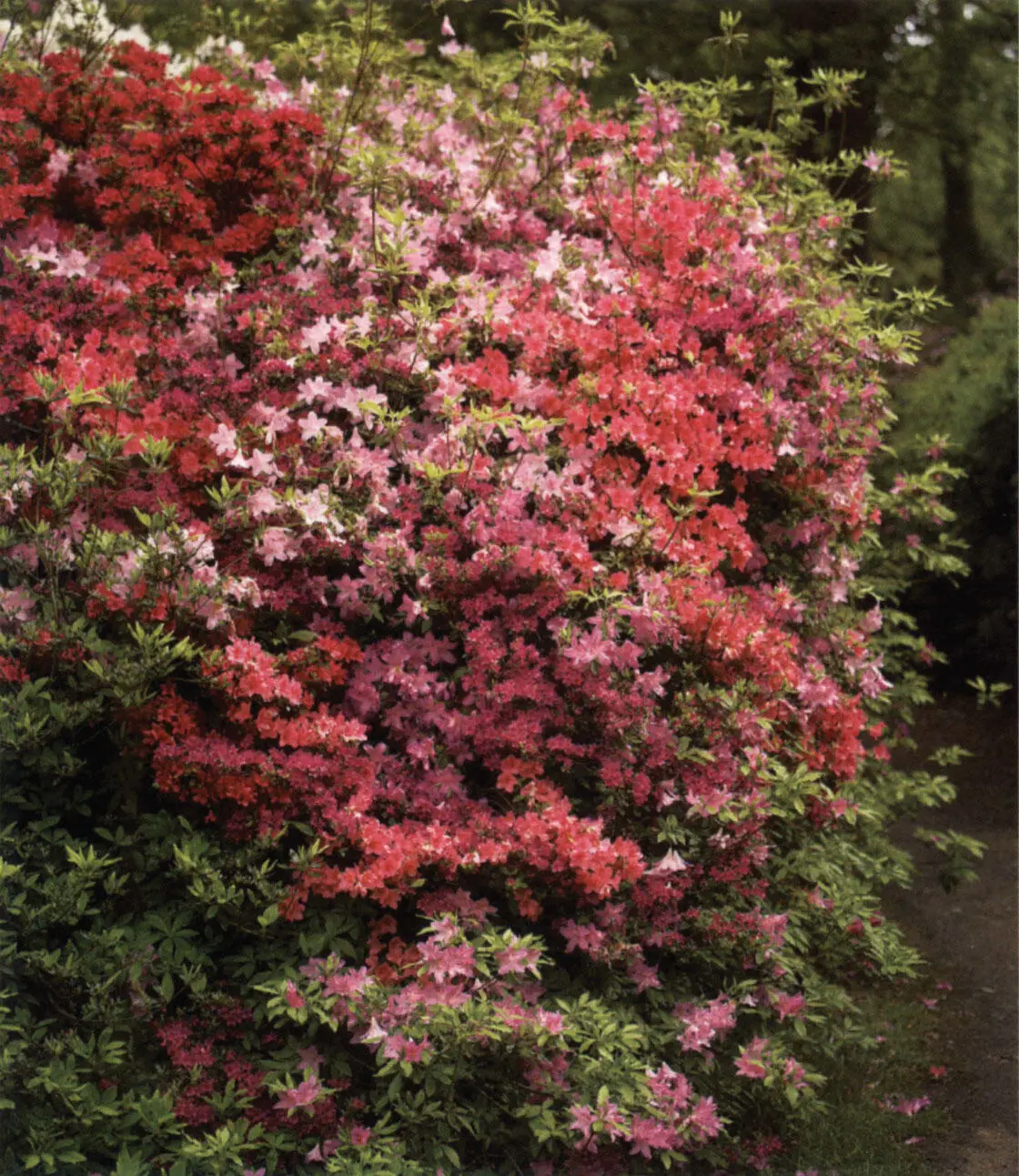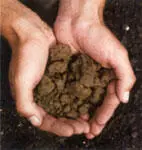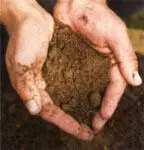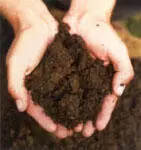
Euphorbia myrsinites naturally grows in exposed rocky places, and so is ideal for planting in a drystone wall.

Astilbes are moisture-loving plants and are best grown in partial shade.
Soil
Getting to grips with the stuff that you grow things in can save you a lot of wasted time and money. A plant adapted for boggy conditions will thrive in a heavy, clay soil with poor drainage. Planted in a well-drained, sandy soil, lavender will thrive just as it does in its native Mediterranean soil. Of course, you can contrive soil conditions by planting in containers or raised beds, but as it’s usually not possible to change your type of soil, it is essential that you understand what you have.
You don’t need a degree in chemistry to gain an understanding of the many different types of soil. Although you could spend many years learning about and specializing in soil types, the structure of the soil, the balance of nutrients in the soil and the constituent make-up of the soil, it just isn’t necessary when you start out in your gardening endeavours. Instead, a simple appreciation of soil types and their respective strengths and weaknesses will do to get you started.
What is soil?
Soil is the growing medium for your plants. From soil, your plants will draw their water and their nutrients. The soil provides a base in which the plant is physically supported too. The fact that soil can do all of this shows you just what an amazing natural material it is.
Some people are lucky enough to have a good soil for gardening that needs little in the way of support and improvement. Others are less fortunate and have a soil that needs to be enhanced by improving the structure of the soil by adding organic material, such as manure, and improving the nutritional value of the soil through the addition of fertilizers (see here). The types of soil that you may encounter are shown opposite.

Rhododendrons and azaleas both grow best in a soil that has a low pH value, which is usually referred to as ‘acid soil’.
Soil types at a glance
| CLAY SOIL |
 |
RECOGNIZING THE SOILHeavy, sticky soil that is difficult to work and dig.If you take a handful and squeeze it in your fist, it will keep the shape that you have squeezed it in to. PROS AND CONSOften rich in nutrients and highly moisture retentive.Often needs the addition of substantial amounts of grit, sand and organic matter to make it more workable and to help the drainage of the soil. SOIL IMPROVEMENTImproving the soil (see here) will make it easier to work and easier for the plants to access the rich supply of nutrients from the clay. |
| SANDY SOIL |
 |
RECOGNISING THE SOILThe opposite of clay soil, it is a dry soil that is very free-draining.A handful will flow freely through your fingers. PROS AND CONSGenerally easy to dig and to work with.Requires regular watering, although the soil’s ability to retain water will be improved by organic matter.Not as nutrient rich as clay soil. SOIL IMPROVEMENTAn annual autumn application of well-rotted manure or leaf mould as a top dressing, will greatly improve the structure of this type of soil. The application of fertilizer helps too. |
| PEATY SOIL |
 |
RECOGNISING THE SOILVery rich in organic material and good at retaining moisture.If you take a handful, it will be crumbly in texture, rich dark brown in colour and when squeezed will release some moisture. PROS AND CONSVery fertile but it can sometimes be too wet. SOIL IMPROVEMENTToo much rain can make the surface soil bind together. Annual mulching can help prevent this happening. |
| CHALKY SOIL |
 |
RECOGNISING THE SOILA crumbly, shallow soil.It is stony and very free draining. PROS AND CONSHas a reasonable supply of nutrients but it is usually alkaline, so not suitable for some acid-loving plants. SOIL IMPROVEMENTBenefits from a regular addition of organic material to aid nutrient levels. |
| SILTY SOIL |
 |
RECOGNISING THE SOILSimilar to sandy soil but a little more moisture retentive. PROS AND CONSUsually has a high level of nutrients, but it can dry out too much. SOIL IMPROVEMENTBenefits greatly from the regular addition of organic matter to help prevent drying out. |
Soil structure
Topsoil:This is the soil on the surface of your garden. It is the soil level that contains almost all of the organic matter that has been dug in to the soil or applied as a top dressing to the soil in autumn.
The topsoil is the most supportive and nutritious of the soil levels for your plants. It is from the topsoil that the plants will draw most of their moisture and nutrients. The depth of top soil will vary greatly from place to place. You are very lucky if you have two spade depths or more of top soil in your garden.
It is in the topsoil that almost all of the organisms and insects that live in the soil will be found. Many of these are beneficial to the soil. One of the gardener’s best friends is the earthworm, which plays such an important part in the incorporation of organic material into the soil. Through all its wriggling around, it is a tireless worker in aerating the soil, improving the drainage and providing ideal conditions for encouraging root growth in plants.
Some new gardens have little or no topsoil at all, and if this is the case it will need importing into the garden. Topsoil is not cheap, but be aware that if you find yourself in this situation, it is crucial you don’t stint on importing it. Any penny-pinching at this stage will come back to haunt you in the years to come! Existing topsoil can also be increased with the addition of generous quantities of organic matter (see here).
Читать дальше




















